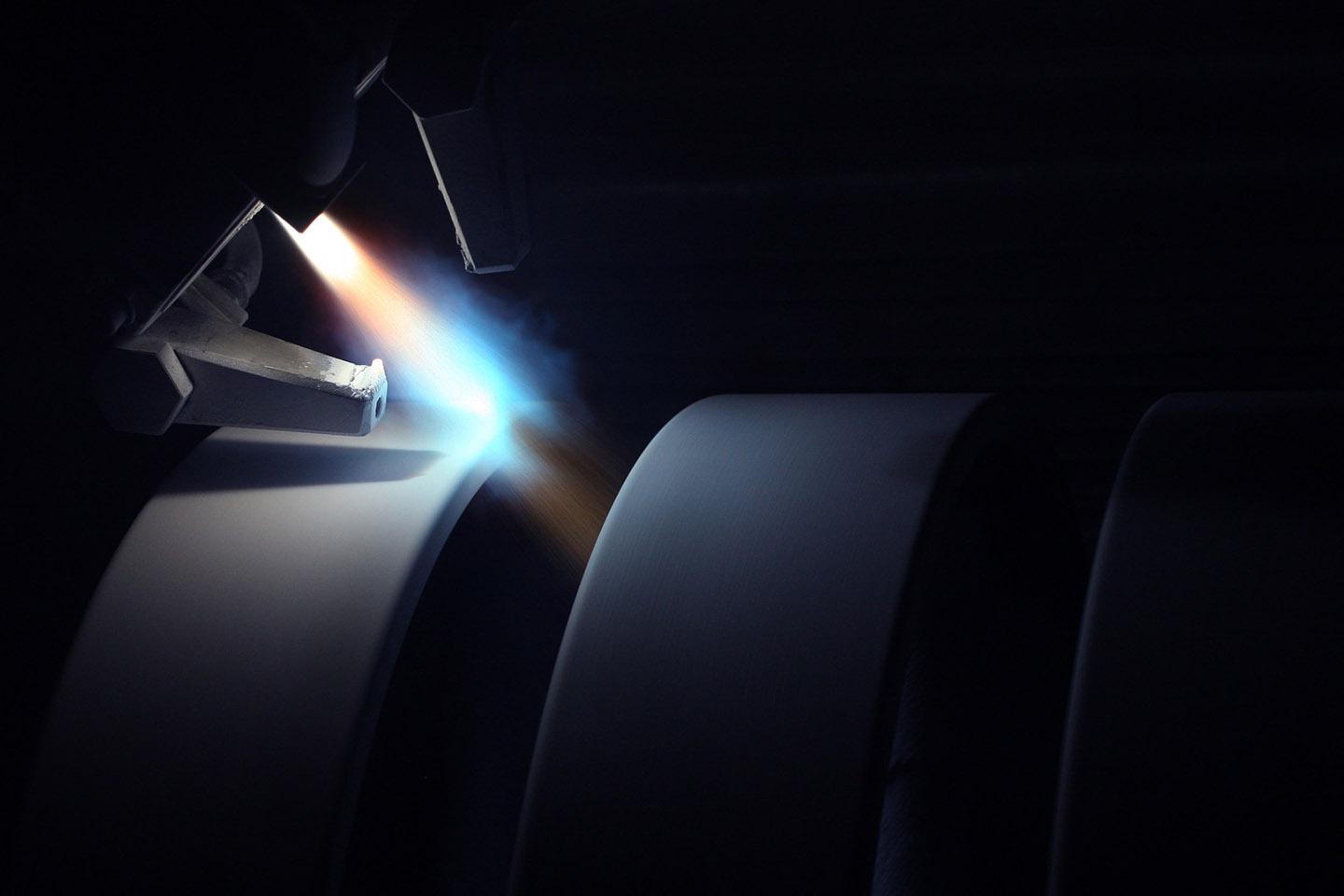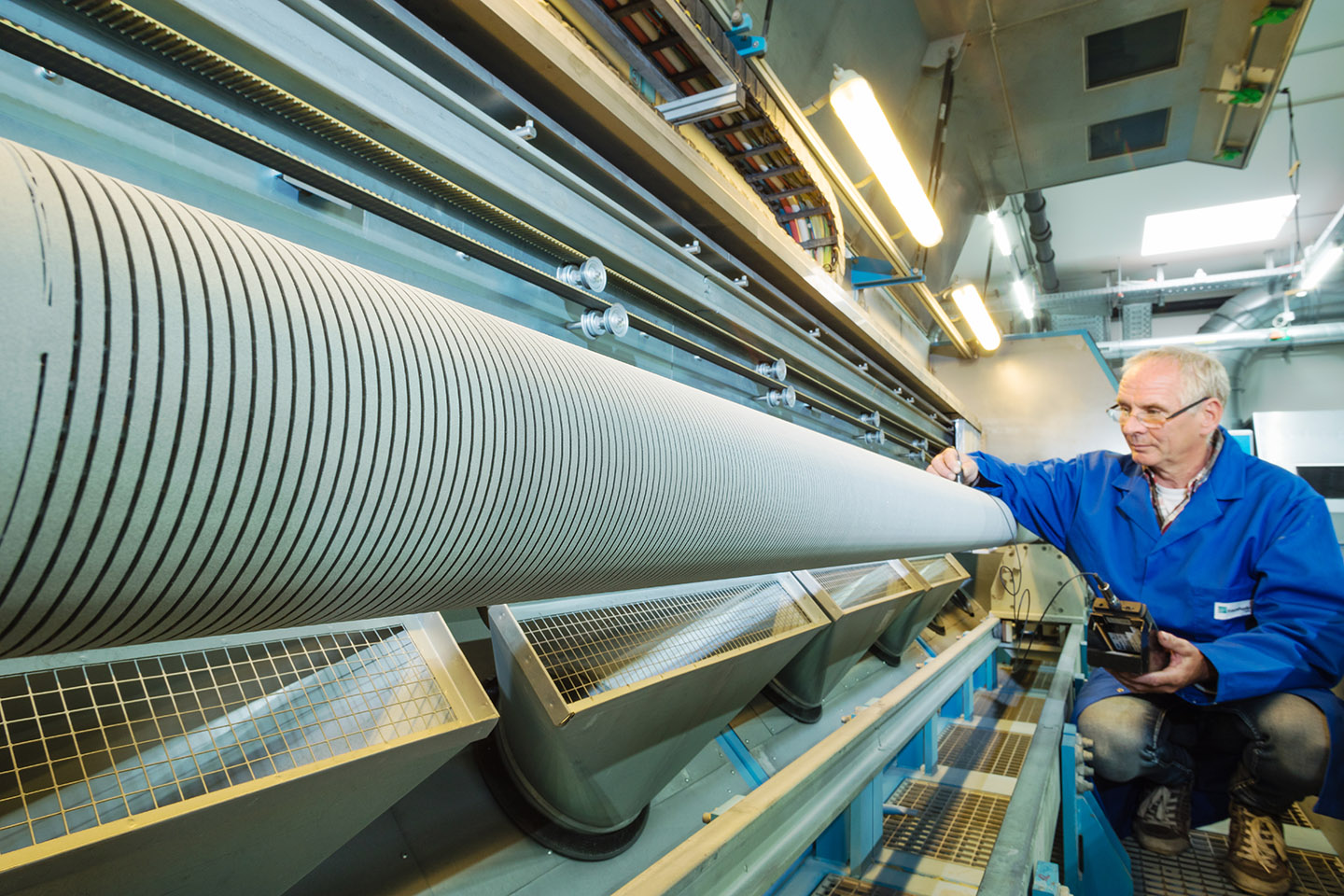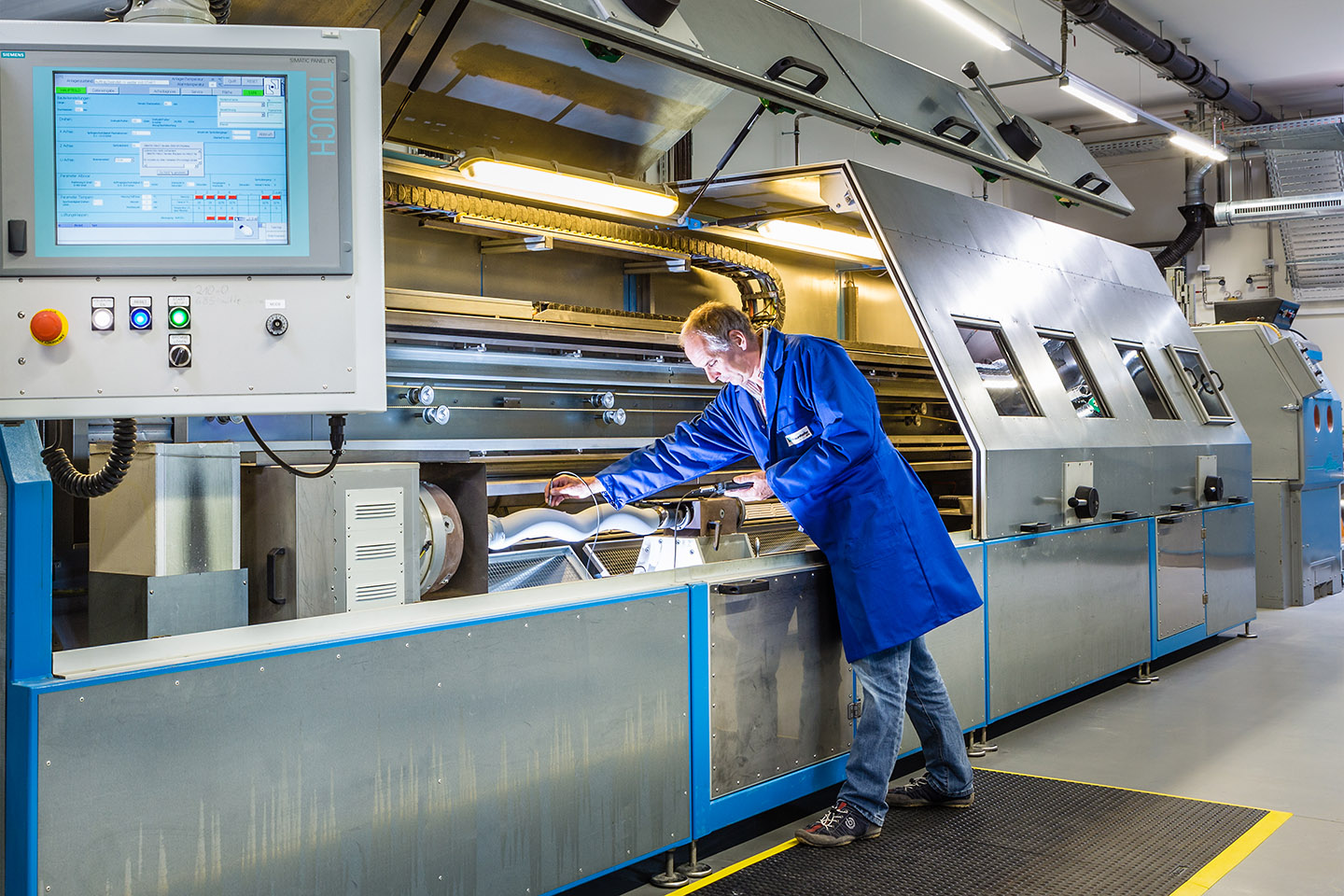Authors: Annegret Kolarow | Bernd Gronde
Transfer project Atmospheric Plasma Spraying – Precision treatment for demanding component surfaces
Wear-resistant, electrically or thermally insulating, corrosion-resistant - the demands on component surfaces are very high in many industrial processes and require extreme precision. Atmospheric plasma spraying (APS) is a particularly cost-effective form of thermal spraying which meets the high demands required in industry. The technology has been refined at IKTS for almost thirty years and qualified for various ceramic coatings. Now technologies and know-how are being transferred to commercialization.
Cost-effective and component-conserving
Thermal spraying is a process for coating surfaces. Spray additives are melted, accelerated in a gas stream and applied to a component. The adhesion of the particles is purely mechanical and the surface of the component is subjected to different thermal loads depending on the type of process. In Atmospheric Plasma Spraying (APS), an electric arc is ignited between the anode and cathode at a temperature of about 3000 °C to dissociate and ionize plasma mixtures of argon, nitrogen and hydrogen. When the gases exit the anode nozzle, recombination results in temperatures of up to 15 000 Kelvin. The spray powders are injected into this hot plasma jet. The powder particles are accelerated, melted and adhere to the material to be coated. However, because cooling gases can be introduced, the component surface remains relatively cold (approx. 100 °C) during the coating process and is therefore not exposed to much stress.
Solutions for demanding surfaces
The component-friendly and cost-effective process is of interest to many end users who contact IKTS with their requirements for the surface finish of certain parts and components. In one industrial project, for example, work was carried out on the coating of medical forceps. These highly specialized surgical instruments must be biocompatible and also electrically conductive only at certain points because they occlude vessels by cauterization. IKTS is certified in accordance with EN ISO 13485 for the manufacture of medical devices and was able to develop an optimal solution for the customer using the APS.
Fiber composites such as carbon fiber or glass fiber-reinforced plastics (CFRP or GFRP) present a particular challenge for coating. Although they are in demand as construction materials due to their low weight and enormous strength, many areas of application have so far remained inaccessible to them due to their low wear resistance. The challenge lies in the nature of the material: during the coating process, the fine, interwoven fibers must not be roughened or damaged. The ALBOCER® process developed at IKTS, a pretreatment of the material surface, now makes it possible to apply ceramic or metallic coatings to such materials by means of plasma spraying. This is of particular interest in the paper industry, for example, where large, heavy deflection rollers made of stainless steel are in use. Lightweight rollers made of fiber composites with wear-resistant surfaces could revolutionize the production process here.
Pilot project: wire-wrapped sand screen
However, the decisive impulse for the transfer of plasma spraying to industry was a project in the field of oil/natural gas production. Here, so-called wire-wrapped sand screens or filters prevent sand from entering the borehole during material extraction. The industrial partner con-slot SCREENS GmbH with its Thuringian sister company MUW Screentec GmbH develops and produces these filters and approached IKTS with the question of how to coat these components to make them more resistant to corrosion and erosion. In addition to high erosion resistance, the requirements for the coating were also chemical resistance to organic acids - in addition to a component length of up to 6 meters, working temperatures of -30 to 160 °C and a filter gap dimension of 100 to 500 μm ± 25 μm, which must be precisely maintained despite the coating.
In the course of the project, this technological challenge was successfully mastered at IKTS. The complex coating required a multi-step process consisting of pretreatment and the application of an adhesive layer before the actual erosion-resistant layer could be applied by means of atmospheric plasma spraying. For each step, different material combinations were tested and evaluated, and an optimal composition was selected. The filters are now already in successful use at a customer of con-slot SCREENS GmbH in Malaysia.
Industrial transfer with R&D outlook
The transfer of the technology, machinery and know-how from a research environment at Fraunhofer IKTS in Hermsdorf to a commercial setting at MUW Screentec GmbH in Erfurt will now take place over a period of three years. It will enable the SME to coat the screens in its own manufacturing context and facilitate the further expansion of sales of these highly specialized components in a competitive global market. In addition to setting up the complex plant technology, Fraunhofer IKTS supports the process with training courses and intensive support and advice during the induction phase. The equipment will also continue to be available for contract research: as part of the transfer project, IKTS is given regular time slots to work on its own R&D projects with the plasma spray technology equipment. Joint research and development work is also firmly scheduled after the end of the transfer project.
Further information
- Current research "Thermally coated erosion protection layers for wire-wrapped sand screens"
- Data sheet "Coating by Plasma Spraying"
- Publication "Pioneering Application of Plasma Spray Coatings to Improve the Erosion Resistance of Rod Based Wedge Wire Screen"
Stay informed: You are welcome to subscribe to our newsletter, read our other blog articles and follow us on LinkedIn, Instagram and YouTube.


